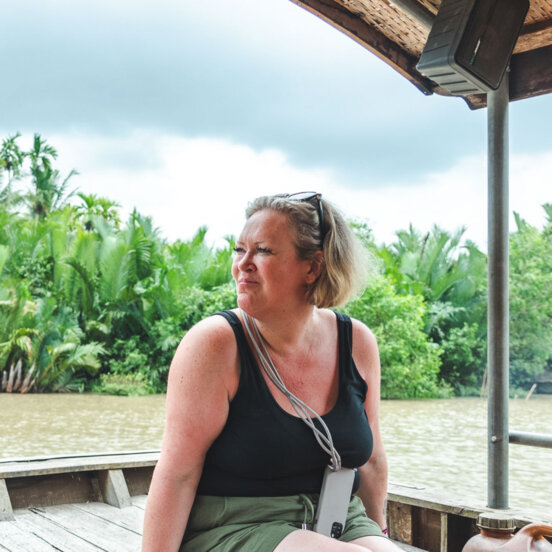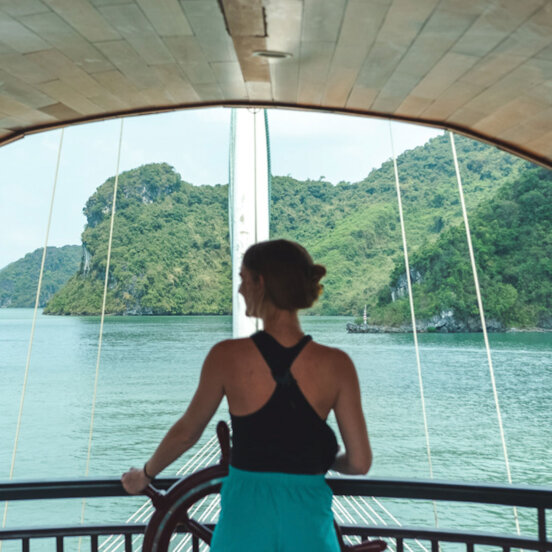Art attack: Inside the creative mind of Morocco’s Andy Warhol

When Morrocan-born British photographer and artist Hassan Hajjaj is in Marrakech you’ll find him at Riad Yima, his Morocco home that’s also a lifestyle boutique, gallery, photography studio and tearoom.
Squirrelled down a narrow alley in the belly of the city’s ochre-hued Medina behind a centuries-old studded iron door, it was designed to replicate a 360 degree version of his creative art installations, while the floors, the walls and ceiling preserve classic traditional Moroccan architecture. Bought it in the early noughties, it took him four years to redesign.
Now, inside the riad birds sing and swoop around tall plants and vines below a neat square of open blue sky. It’s a lurid sanctuary, a kaleidoscope of colour, where every single detail is deliberate. From the Moorish-style floor tiles to upturned Coca-Cola crates repurposed as seats and neat rows of babouches (Moroccan slippers) made from discarded flour sacks.

He reconnected with Morocco in the early 90s
Rails are stocked with djellabas (robes) in African designed fabrics and suits woven from sugar bags. Crowding the walls are vintage advertising and film posters, and Hassan’s own instantly recognizable photographs hang above stacks of multi-coloured T-shirts.
Growing up in the fishing village of Larache, Morocco, Hassan moved to London in the 1970s. Leaving school at 15, he sold flowers and then clothes in Camden Market, while promoting underground club nights, booking his own DJ sets, working on film shoots and fashion shows, before finding art.
He reconnected with Morocco in the early 90s when he took his daughter to meet her relatives. “In Marrakech there’s a lot of inspiration. I like traveling, meeting people, music and the fashion,” he says. He now flits between the two cities every few weeks, nurturing a deep connection between them both.

The A-list can’t get enough – Madonna has visited Riad Yima
Motivated in his art to show people Morocco has “something cool” to offer the world, his influences are North African heritage, food, fashion and music, especially ‘90s club, hip-hop (he loves Busta Rhymes) and reggae scenes, as well as counterfeit designer goods. So inspired is he, he named his shop in East London Larache.
Yet it’s taken a while for Hajjaj to feel part of the art world. “I didn’t study art or fashion like all my friends did, so I didn’t feel worthy,” he says. “I didn’t have the confidence to call myself an artist. I just took pictures. I had to prove to myself this was something long-term.”
Now, while the underground scene is home and he shrugs off any “celebrity photographer” label, the A-list can’t get enough. Madonna has visited Riad Yima, and he’s shot rapper Cardi B for New York Magazine and Billie Eilish’s first US Vogue cover.

You’ll spot Kesh Angels in wooden frames inlaid with cans of soda
He’s also made a name for himself in the fashion world with the launch of his eponymous fashion label Andy Wahloo in 2017, named off the back of him being labelled the Moroccon Andy Warhol. “I got branded with something from outside, and reclaimed it. It translates to ‘I have nothing’ in Darija,” he says.
You can see his creations all around Riad Yima, from the turquoise and pastel pink tea caddies that celebrate classic Pop art to artwork from traditional Moroccan soup brands and hoodies printed with SuperLux Souk Wear – a playful poke at Superdry.
You’ll also spot Middle Eastern barbie dolls (Fullahs) in display boxes. They are dressed like the Hajajj’s Kesh Angels, images of which are mounted across the walls in wooden frames inlaid with cans of soda and tins of tomato paste, all referencing Islamic mosaics and retro Moroccan brands. It’s a nod to his synonymous series of photographs depicting young female Moroccan bikers that raised his name globally after sell-out exhibitions in London, Paris and New York. “I didn’t set out to change anything,” Hajjaj says. “Marrakech is a bike city with all types of people riding. I just took the pictures.”

I work with humour as a way to communicate with people
Hajjaj regularly riffs off designer labels in his work, remixing Louis Vuitton, Chanel and Gucci insignia with his signature subversive wit. “Those luxury brands are something that I grew up with,” Hajjaj says. “We had a shop in the 80s and we sold counterfeit Chanel, Gucci and Prada T-shirts. As young teenagers we all wanted to feel what it was like to be wealthy.”
He adds, “My work can say something political. It isn’t a joke but there’s definitely humour. I find it’s an easy way to communicate with people.”
His upcycled furniture represents a unique style he’s honed over decades. “In the 90s I was doing lots of shows using recycled objects. I turned light boxes from a shop sign into a table, old fabrics into cushions and banquettes and recycled sheets of metal into lamps. It felt natural the furniture should end up in the riad.”

If I can make a change for one person, I’m happy
He also works with local artisans to create each piece. Business is booming now that people are more conscious of making sustainable purchases. “There’s definitely a demand for it,” he says.
“It’s quite a specific style of furniture so when you do get somebody liking it, it’s normally somebody who understands either the culture or my work or they’re big into upcycling.” Through his projects, he’s helped launch the careers of young Moroccan creatives, like Yassine Alaoui Ismali, aka Yoriyas, a Casablanca-based street photographer.
“It’s always cool to meet someone upcoming. It’s also another way of learning from the younger generation what’s going on. If I can make a change for one person, or they get something from me and use that in a positive way, I’m happy. That makes me feel content.”
Join Flash Pack’s Best of Morocco of Morocco Highlights: From Coast to Medina adventures for yourself, along with visits to the bustling souks of Marrakech.
Got a story or adventure that could inspire a solo traveler like you? Tag @flashpack on social or email [email protected] to be featured.
Images: courtesy of Adnane Zemmama, Jenny Fremont and Yassine Alaoui Ismaili










